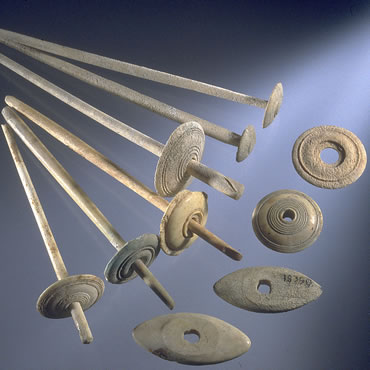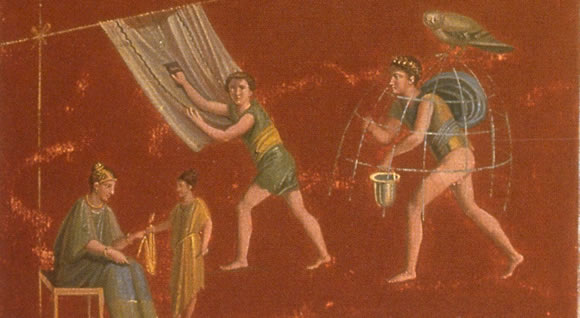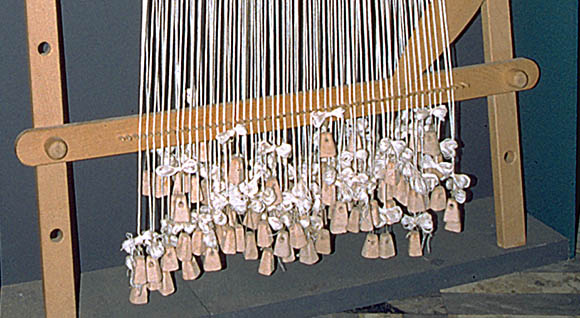9. Fabrics

Around 79 AD, the textile industry was one of the leading activities in Pompeii. A number of natural fibers were used, of plant and animal origin. Plant fibers were taken from crops or wild vegetation through processes of soaking, beating and drying.
The inhabitants of Pompeii achieved particular skill in working with raw wool and transforming it into finished products. Spinning and weaving were strictly women's jobs: the looms were upright, with a counter-weighted warp; the cloth was woven from top to bottom. Both yarns and cloths were dyed using natural dyes.
The production of fabric was one of the principal industrial activities of Pompeii. Vegetal fibres were obtained by retting stems of plants such as broom, flax, and hemp, or from the seeds of cotton. Fibres used in fabrics also came from animals: sheep were shorn, and the wool was subsequently carded using a thorny thistle. Another fibre was obtained from the filaments produced by one of the large mollusks to anchor its shell to the rocks under water.
Spinning was done with a spindle, and the yarn that was produced was then worked on a loom. The vertical threads, the warp, were held taut by means of weights. Back and forth across these was drawn a shuttle which carried the horizontal threads, or the weft, which became interwoven with the warp. The material thus produced was rolled upon a horizontal axis.
Fabric was then dyed with plant pigments, including yellow, red, deep blue, and black, or with animal pigments, including a purple obtained from the shell of a mollusk.
- Provenance: Pompeii, Fullonica of Veranio Ipseo (R. VI,8,20)
- Date: Second half of first century AD



